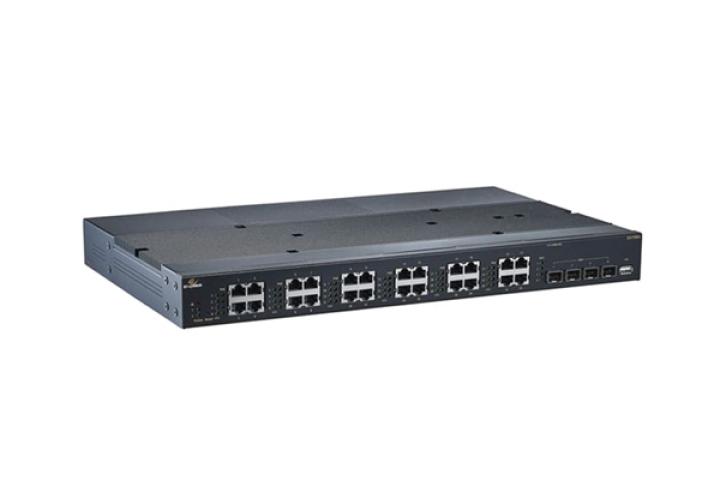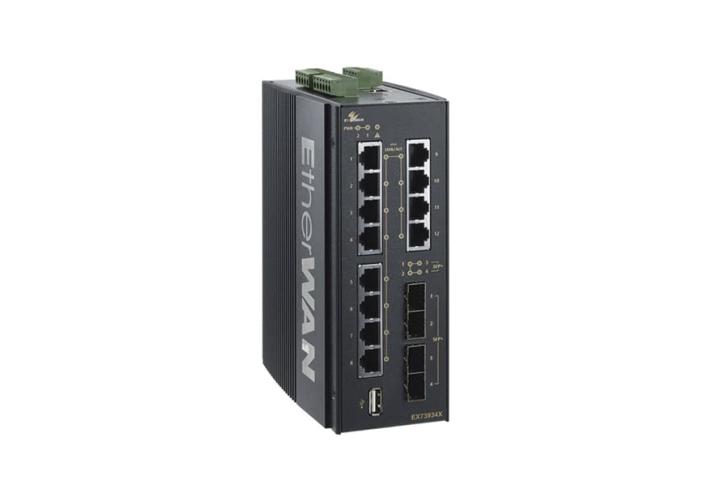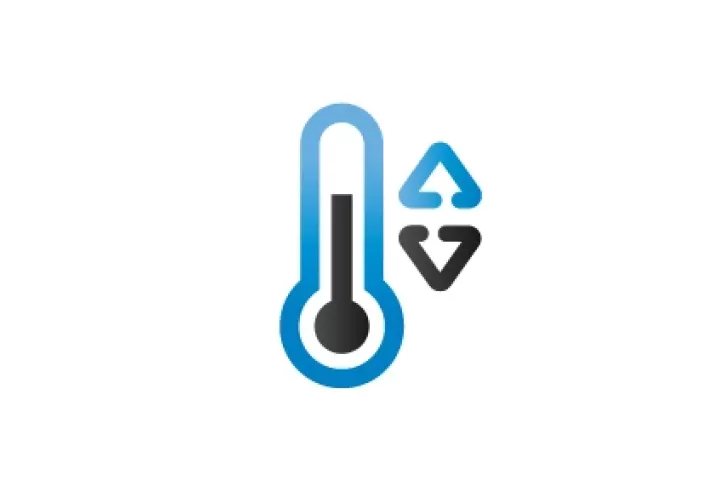Managed Ethernet Switches VS. Unmanaged Ethernet Switches
When connecting more than one Ethernet device in the same location, an Ethernet Switch is the way to go. It may seem simple, like plugging into an outlet strip, but there are significant considerations one must take to ensure your network is rock solid. What is the difference between managed and unmanaged switches besides price you ask?
Industrial Layer 2 Managed Switch Capabilities
Industrial Layer 2 Managed Switches or Layer 2+ Switches are designed to operate at extreme temperatures up to -40 to 75°C (-40 to 167°F) and in areas with electromagnetic interference, allowing for the creation of cost-effective, reliable, and secure networks. A range of advanced Ethernet management features, with support for necessary redundancy and security elements, these switches meet the demands of a wide range of applications.

Benefits of Industrial Layer 3 Managed Switches
Industrial Layer 3 managed switches provide a rugged and solid solution for routing between sub-networks with support for static routes, RIP V1/2, and VRRP. Layer 3 switches were developed to provide the network with better fault isolation and traffic segregation and to simplify security management.
The benefits of using Layer 3 switches include reduced broadcast traffic volume, easier VLAN configuration, support for inter-VLAN routing, and separate routing tables. Additionally, Layer 3 switches provide lower network latency and reduced time and resources.

When Neither Routing nor Management features are needed: Industrial Unmanaged Switches
Industrial unmanaged Ethernet switches are simple, easy to use, and connect multifarious Ethernet devices seamlessly. Unmanaged switches generally do not provide monitoring, alerts, or alarms. Using an unmanaged switch is analogous to driving a car with no dashboard. In simple applications where there are not too many Ethernet devices and fewer than three switches, unmanaged switches are often the best and most economical choice.

Managed Switches vs. Unmanaged Switches
Managed switches provide extra value in a network by providing information about the status of the network. This includes things like high bandwidth consumption, unexpected port connections, and power supply failure. Additionally, a managed switch can implement redundancy, a critical feature when connectivity must be maintained at all times. Managed switches also enable administrators to configure, manage and monitor networks for full optimization.
Unmanaged switches are simpler, easy to use, and more economical. However, unmanaged switches do not provide any sort of monitoring, alerts or alarms. In simple applications where there are fewer devices, no VLANs, and basic connectivity is the main objective, they are often the best choice.
| Attribute | Managed Switches | Unmanaged Switches |
|---|---|---|
| Features | VLAN, redundancy, DHCP, port mirroring, QoS, SNMP, etc. | Few features. Mostly fixed configuration. |
| Performance | Highly configurable, control network traffic based on user-defined parameters. Allow for remote troubleshooting. | Plug and play. Some allow configuration of QoS settings. |
| Security | Security protocols for the data, management, and control planes. | Physical security only |
| Cost | Higher to purchase, install, and maintain. | Less expensive |
| Applications | Large networks with more than three nodes. | Small Networks found in homes, small offices, laboratories, etc. |
Frequently asked questions on Ethernet Switches
What are industrial Ethernet switches?
Industrial Ethernet switches are high-reliability and cost-effective network devices designed to be applied in harsh industrial environments where they are likely to be subject to shocks, vibration and extreme temperatures. With the ability to operate in temperatures from -10 to 60°C (-14 to 140°F), industrial switches are widely implemented in the transportation and energy networks. They are usually equipped with redundant power inputs to ensure uptime in case a power source fails. Power input is usually DC, with some models having options for AC power. Industrial switches come in both managed and unmanaged versions.
What are industrial Ethernet switches used for?
Industrial Ethernet switches are employed in factories, where they play a key role in modern automation systems. Other applications include power stations, intelligent transportation systems (ITS), railway systems, and water treatment plants. Because many of these application locations will have relatively higher levels of electromagnetic interference (EMI), industrial switches are built with extra shielding and filtering for operation in these environments. Industrial switches are also built and tested for higher Electromagnetic compatibility (EMC), the ability for devices to function in electromagnetic environments.
What is the difference between industrial Ethernet switch and normal Ethernet switch?
Regular Ethernet switch used in offices and schools are often called “commercial switches.” Most commercial switches are designed to operate in a temperature range of 0 to 45°C (32 to 113°F), which is usually very suitable for indoor use. As opposed to industrial switches, commercial switches are not protected against excessive shock, vibration, and EMI. They will often use an internal fan to dissipate heat, and are designed to be installed in a rack instead of a DIN rail. Commercial switches almost always use AC input power, and are not equipped with redundant power inputs.
How do I choose an industrial Ethernet switch?
The initial decision to make when selecting an industrial Ethernet switch is whether to go with a managed switch or an unmanaged switch. Unmanaged switches are simple, straightforward to operate, and generally more affordable. However, unmanaged switches do not provide monitoring, alert, or alarm functions. Moreover, they often do not allow administrators to control network traffic through protocols such as Quality of Service (QoS). Managed switches include all of these functionalities and more.
It is important to determine if you need Power over Ethernet (PoE). PoE switches can deliver power to and transfer data from external devices such as IP cameras, wireless hotspots, VoIP phones, and other PD devices. Industrial PoE switches have different power output capacities per port and varying total power budgets.
Port count and speed are also factors to consider. You will need enough ports to connect all devices, and those ports must be fast enough to handle your data requirements. Port speed options include fast Ethernet, gigabit Ethernet, and 10G, which require fiber ports or a small form-factors (SFP) pluggable transceiver.
What is a 10 GB Ethernet switch usually used for?
10G Ethernet switches are often used as core switches: Switches installed at the backbone of a hierarchical network. 10 Gb Ethernet switches operate at full-duplex, eliminating the need for collision detection and devices such as repeater hubs.
What cable do I need for 10Gb Ethernet?
Both copper and fiber cables can be used for 10 Gb transmissions. Fiber options include Single-mode fiber (SMF) and Multi-mode fiber (MMF). At higher speeds, copper cables are best used for shorter distances.
What is a managed switch vs unmanaged switch?
Unmanaged Ethernet switches are relatively simple devices that are easy to install and use. Little to no configuration is required, and they are much more affordable than managed switches. However, unmanaged switches have a very few functionalities beside receiving and sending data. This is often acceptable for low to normal levels of network traffic.
Managed Ethernet switches are more expensive but have wide range of features and functions. They let administrators control and monitor their network and often have more robust security features. Managed switches are used in large networks where network traffic needs to be prioritized. These switches are also better in terms of network scalability – the ability to expand a network’s size and capacity. See more information
More products you might be interested in

EX75900 Series

IG5 Rack Series

EX73900X Series

EX78900X Series

OttoE Series

OttoE PoE H Series

SmartE Series

EX46900A Series

EX42300 Series
Requirements, Applications, and Case Studies
Why choose EtherWAN Industrial Ethernet Switches

ADVANCING FOR 20 YEARS

INDUSTRIAL COMPONENTS

GREEN COMMITMENT

ABOVE AND BEYOND STANDARDS

ROCK-SOLID WARRANTY












